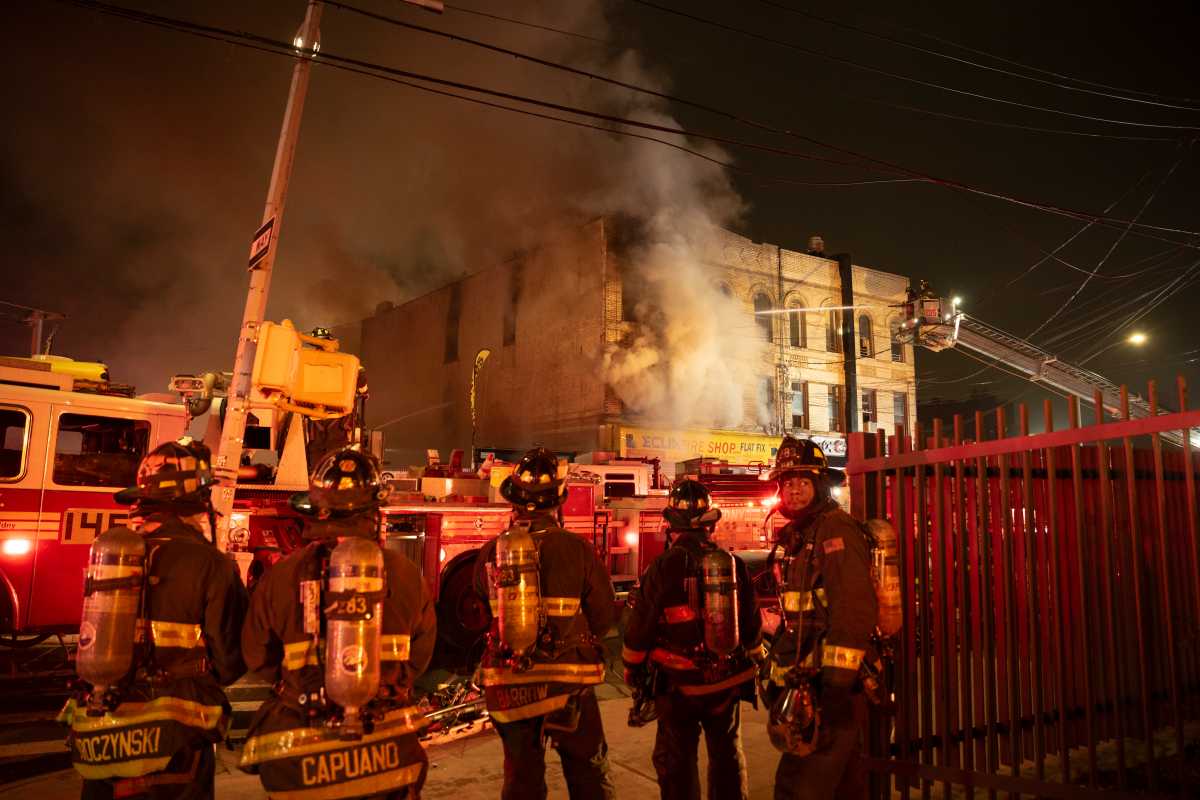Days after an Ozone Park father drowned trying to save his wife and daughter in the waters off Jacob Riis Park – making him the sixth drowning victim off the Rockaways this summer – Congressmember Anthony Weiner called on the Federal Army Corps of Engineers to expand their $4 million study of the Rockaway Beaches to include safety measures to prevent the deadly riptides.
On Friday night, August 14, Jose-Luis Olivarez, 36, his wife Elfega and eight-year-old daughter Stephanie were swimming off Beach 149th Street and Rockaway Beach Boulevard – after life guards had gone off duty – when Jose noticed that the pair had gotten into trouble. He sprang into action, rescued his daughter and returned for his wife, but, exhausted, he succumbed to the strong current.
He was taken ashore, but his wife – and paramedics – were unable to resuscitate him. He later died at Peninsula Hospital Center. Olivarez also leaves behind a two-year-old son, Ravaldo.
“He was a nice man, a family man. They are a quiet family,” said neighbor Carmella D’Agostino. “Words cannot describe how bad I felt, [learning that] a young man that age passed away.”
Two days before Olivarez’s death, Heyward Patterson, 40, of Jamaica, who had reportedly been drinking before swimming, disappeared off 15th Street Beach in Far Rockaway. The Coast Guard, rescue divers and even rescue choppers searched for Patterson, whose body later washed ashore, reportedly at the Lawrence Beach Club in Atlantic Beach. A Nassau County medical examiner determined on Monday, August 17 that he drowned, according to published reports.
“Over the past year, six people have drowned because of strong rip tides off the Rockaway coast,” said Weiner. “This is a dramatic increase over previous years. Compared to last year there has been a three-fold increase this year – with two drownings in 2008 and one in 2007.”
Brian Feeney, spokesperson for the National Parks Service, agreed.
“It seems to be a lot of people this year, certainly more than last year,” he told The Courier.
Feeney did note, however, that there have been no drownings at Jacob Riis Park when lifeguards are on duty, from 10 a.m. to 6 p.m., from Memorial Day through Labor Day. This year, he said, there are 75 lifeguards at Jacob Riis.
Additionally, he said, signs clearly warn beachgoers not to swim unless a lifeguard is present, and numerous postings – at every entrance point – warn of rip currents.
“It is the danger of rip currents that people need to be aware of,” said Feeney. “Our lifeguards are in the water nearly every day helping people who are in trouble. It’s when people make the decision to go in the water after hours [that trouble happens].”
“I have fought hard to secure funding for the Army Corps’ $4 million study of beach erosion, but it won’t be complete if doesn’t closely examine the serious safety concerns for swimmers and recommendations for structural changes to prevent drownings,” said Weiner.
The study, expected to be completed by 2011, with construction of the 100-year storm protection plan for the Rockaways set to begin in 2012, should “include an examination of safety improvements,” wrote Weiner to Lieutenant General Robert Van Antwerp, Commanding General, U.S Army Corps of Engineers. “Specifically, I’d like to have your engineers include recommendations for the prevention of drowning as a result of strong rip currents in their 100-year storm protection plan for the Rockaways.”
“The ocean currents may at times be very strong, but the Army Corps can help us turn the tides of the awful tragedies that have hit the Rockaways and make our beaches better and, more importantly, safer,” continued Weiner.































